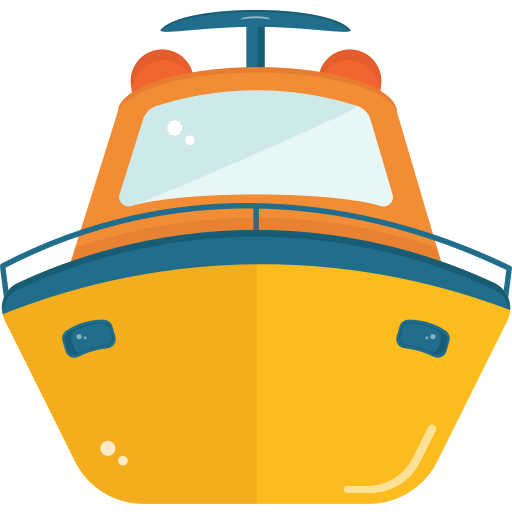Understanding Yacht Stabilizers: How They Work
Yacht stabilizers are essential components in enhancing the comfort and safety of sailing, particularly in rough waters. They are designed to reduce the roll of a vessel, making it more comfortable for those aboard and improving safety. The technology behind yacht stabilizers is intricate and can vary significantly depending on the type of stabilizers implemented. This article delves into the working principles of yacht stabilizers, their various types, and how they influence the overall sailing experience.
The fundamental purpose of yacht stabilizers is to minimize the side-to-side rolling motion, which can be exacerbated by waves, wind, or vessel construction. This rolling action can lead to discomfort for passengers and crew, and, in severe cases, can jeopardize the vessel’s safety. There are several types of stabilizers used in yachts, each operating on distinct principles while aiming for the same ultimate goal: enhanced comfort and stability.
One popular type of stabilizer is the active fin stabilizers. These devices are mounted on the hull and can be adjusted dynamically based on the vessel’s movement. When the boat starts to roll, the fins move in response, creating lift in the opposite direction of the roll. This technology utilizes sensors to detect the motion in real time and respond aggressively to shorten the rolling period and mitigate the angle of heel.
Another innovative solution is gyro stabilizers, which work on the principle of angular momentum. A heavy flywheel spins within a gimbal, generating a force that counteracts rolling. These stabilizers are particularly effective at low speeds, making them ideal for small to medium-sized yachts. They tend to be less intrusive than fin stabilizers, requiring no external protrusions on the hull, thus preserving the yacht’s aesthetics and hydrodynamics while providing a smoother ride.
For larger yachts typically subject to more significant rolling motions, the advanced technology of actively-controlled stabilizing tanks comes into play. These tanks have the capacity to fill with water to create mass that counteracts the roll. By adjusting water levels in response to onboard motion data, these systems can effectively dampen the rolling movements to ensure maximum stability.
In examining the effectiveness and efficiency of these stabilizers, one must consider the trade-offs involved. While active fins are highly efficient and can be fine-tuned to immediate conditions, they require more maintenance and installation complexities. Gyro stabilizers, while elegant and efficient for specific applications, may face limitations on larger vessels where inertia impacts performance. Additionally, the choice of stabilizer often depends on the intended use of the yacht: leisure, long voyages, or racing—each functional requirement may lead to different stabilizer technologies being favored.
Ultimately, the existence and implementation of yacht stabilizers represent a substantial advancement in marine technology. Ensuring stability not only enhances the experience for passengers but can also improve safety by reducing the risk of seasickness and allowing for smoother operations during navigation. This field of technology continues to evolve, with ongoing research and development leading to even more sophisticated systems, ensuring yacht owners receive the best possible sailing experience.
How Yacht Stabilizers Function
The core function of yacht stabilizers is to counteract the natural rolling motions that occur when a boat is subjected to waves, wind, and other external forces. This is accomplished through several mechanisms:
Gyroscopic Stabilizers
Gyroscopic stabilizers utilize the principles of angular momentum and gyroscopic forces. They consist of a spinning flywheel mounted on a gimbal. As the yacht begins to roll, the flywheel resists this motion due to its inertia, generating a force that counteracts the roll. This stabilization occurs regardless of the ship’s speed, making gyroscopic stabilizers effective at anchor or in any sea condition.
Active Fin Stabilizers
Active fin stabilizers employ hydraulic fins that extend from the hull of the yacht. These fins can be adjusted dynamically to create lift that counteracts the rolling motion. When the yacht rolls to one side, the fins respond by generating a force on the opposite side, effectively pivoting the boat back towards an upright position. This mechanism is particularly effective at higher speeds and is often used on larger vessels.
Passive Stabilizers
Passive stabilizers are simpler in design and involve the use of weighted keels or bilge keels, which help to reduce rolling naturally through increased lateral resistance. These types of stabilizers do not require any mechanical assistance and work continuously. While they are less effective than gyroscopic or active fin systems, they require minimal maintenance and are commonly found in smaller boats.
Comparison of Stabilizer Types
| Type | Mechanism | Effectiveness | Applications |
|---|---|---|---|
| Gyroscopic Stabilizers | Spinning flywheel | High | All types of vessels, effective at anchor and underway |
| Active Fin Stabilizers | Hydraulic fins | High | Large yachts and commercial vessels, best at speed |
| Passive Stabilizers | Weighted keels | Moderate | Smaller boats, minimal maintenance |
Importance of Yacht Stabilizers
The absence of proper stabilization can lead to increased discomfort for passengers and crew, as well as pose safety risks. Excessive rolling can lead to seasickness, difficulty in navigating the vessel, and can even cause structural damage over time. In luxurious yachts, stabilizers are pivotal in maintaining a serene environment, allowing onboard activities like dining and relaxation without disturbance.
Conclusion
Yacht stabilizers play a critical role in ensuring both comfort and safety while sailing. The choice of stabilizer type—be it gyroscopic, active fin, or passive—depends on various factors including the size of the vessel, the anticipated conditions, and the type of activities planned. Understanding how these systems work enables yacht owners and operators to make informed choices that enhance the sailing experience, whether cruising in calm waters or navigating through turbulent seas.
